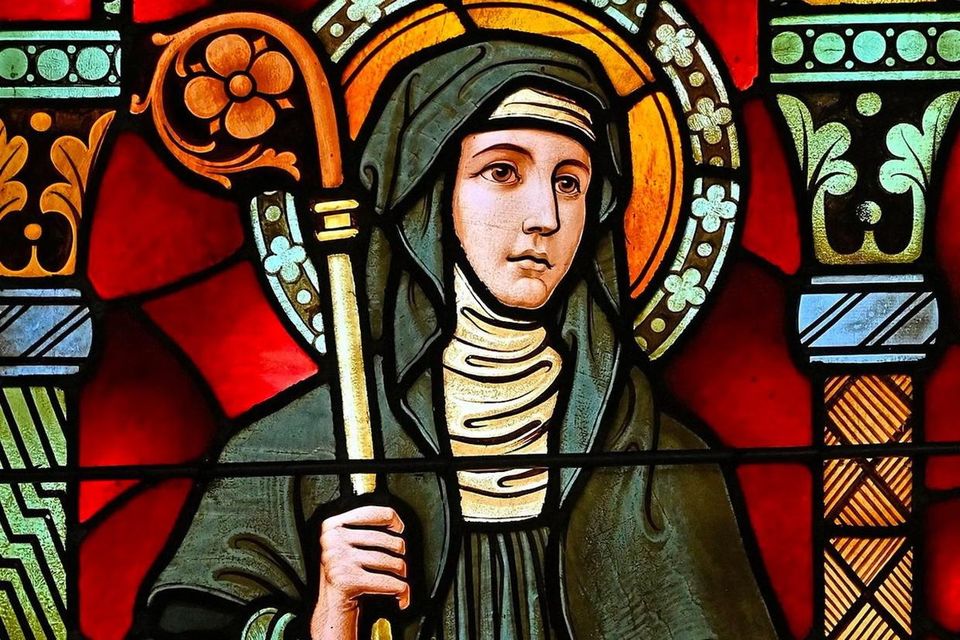Relics of St. Brigid to return home to Kildare 1,500 years after her death
St. Brigid’s remains were moved from Kildare in the year 800 to protect the relics from Viking attacks
The relics of St. Brigid will be welcomed home to Kildare for the first time in 1,000 years
On the 1500th year of the passing of St. Brigid, her relics will return home to Kildare after nearly a millennium.
The relics of St. Brigid will be welcomed ‘home’ to Co Kildare, where they will go on permanent display at Kildare Town Parish Church.
In preparation for the return of St. Brigid to Co Kildare, Into Kildare, which is the Kildare Tourism Board have mapped the movements of St. Brigid’s relics which have been away from Kildare for 1,000 years.
According to Into Kildare, it is believed that St. Brigid died in 524AD and was buried beside the main alter in her monastic church in Co Kildare. Her grave became an attraction for pilgrims throughout Ireland and Europe.
In the eighth century, a shrine was built for the saint, which was adorned by gold, silver and precious stones.
However, around the year 800, Vikings came to Ireland and plundered and attacked towns and churches around the country.
To protect the body of St. Brigid from Viking attack, her remains were moved to Downpatrick Cathedral in Northern Ireland, where she was buried in an unmarked grave beside St. Patrick and St. Columba.
The grave was purposely left unmarked in an attempt to protect it and keep the location a secret.
As years passed, the graves became too good of a secret as the location of the saints’ bodies including St. Brigid’s was forgotten.
For approximately 300 years, the location of the graves of Ireland’s patron saints was unknown.
That was until 1185, when according to the stories surrounding St. Brigid, the Bishop of Down was shown the location of the sacred relics by God, when the bodies of the three saints was found by a beam of light which shone on a section of the church floor.
The bodies of the three saints were found under the floor, with St. Patrick in the middle and St. Brigid and St. Columba on either side.
In 1186, the bodies were enshrined for 400 years, until Lord Leonard Grey, the appointee of King Henry VIII destroyed the shrine.
St. Brigid’s remains were saved although the shrine was destroyed, and her remains were secretly transported to the continent.
According to tradition, three Irish knights took a bone fragment from her head to Lumiar, which is a small town outside Lisbon in Portugal in the 13th Century. The relic is still in the Church of St. John the Baptist in Lumiar.
David Mongey, The Chairman of Into Kildare, the Kildare Tourism Board explained, “The relics of St. Brigid have not been in County Kildare for nearly 1,000 years. This year is the 1500th year of the passing of the saint and what could be more special than to bring St. Brigid’s relics home, where she belongs?
"She built her church in Kildare and her legacy as a peace maker and a protector of nature is still as relevant today as ever.”
He added: “It has been a long process to finally bring her relics back to the county and together with my colleagues at Into Kildare we would like to thank Kildare County Council and the Brigideen sisters in for their great work in bringing Brigid home.”
Thousands of people are expected to attend this momentous occasion, will take place on Sunday January 28. A procession will accompany the relics from Solas Bhride Centre in Tully outside Kildare Town at 10.30am, where they will then proceed to Kildare Town Parish Church.
The relics will then be taken into the church by the Bishop of Kildare & Leighlin, Bishop Denis Nulty who will celebrate a special mass at 11am.


No comments:
Post a Comment
Note: Only a member of this blog may post a comment.